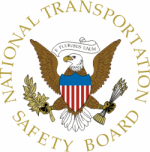Sun, Mar 28, 2010
Pilot Was Not "Instrument Current"
 The NTSB has issued a Probable
Cause report for an accident that occurred during an "Angel
Flight." Pilot Joseph Baker was transporting a cancer patient and
his wife from Connecticut to Boston in August, 2008, when the
airplane, a Beechcraft G35 Bonanza, went down in a supermarket
parking lot, killing all three.
The NTSB has issued a Probable
Cause report for an accident that occurred during an "Angel
Flight." Pilot Joseph Baker was transporting a cancer patient and
his wife from Connecticut to Boston in August, 2008, when the
airplane, a Beechcraft G35 Bonanza, went down in a supermarket
parking lot, killing all three.
The probable cause report indicates that Baker, an instrument
rated pilot, was a volunteer pilot for a charity organization that
connects pilots and aircraft owners with individuals in need of
transportation primarily for medical purposes. The pilot was not
instrument current. In addition, the charity did not verify
instrument currency of volunteer pilots nor were they required
to.
After takeoff, the flight proceeded towards the destination
airport on an instrument flight rules clearance and was vectored
onto the downwind and base legs for sequencing. The pilot made two
errors related to incorrect heading changes both of which were not
immediately detected by the controller, but neither were
significant. While on the base leg and approximately 1.5 miles west
of the final approach course for runway 4R, the controller
instructed the pilot to fly heading 060 degrees to intercept the
final approach course. Radar data depicted a large radius turn
towards the left, and the airplane flying through the final
approach course. When the flight was approximately 1.6 miles east
of the final approach course, the controller advised the pilot he
had passed through the course and instructed him to turn to a
heading of 010 degrees to re-intercept. Radar depicted a tight
radius turn past the assigned heading, while the airplane descended
below the assigned altitude of 3,000 feet. The airplane then turned
to the north, then southeast with altitude deviations descending so
low the controller issued several low altitude alerts. The airplane
then entered a final descent, immerged from the base of clouds, and
impacted into a parking lot. Examination of the engine, airframe,
and avionics did not reveal any preimpact failures or
malfunctions.
The NTSB determined that the probable cause(s) of this
accident to be the pilot's failure to maintain control of the
airplane while attempting to execute an instrument approach in
instrument meteorological conditions. Contributing to the accident
was the pilot's lack of instrument currency.
More News
Circle To Runway (Runway Number) Used by ATC to inform the pilot that he/she must circle to land because the runway in use is other than the runway aligned with the instrument appr>[...]
Aero Linx: National Aviation Safety Foundation (NASF) The National Aviation Safety Foundation is a support group whose objective is to enhance aviation safety through educational p>[...]
At Altitude Of About 250-300 Ft Agl, The Airplane Experienced A Total Loss Of Engine Power On November 6, 2024, at 1600 central standard time, a De Havilland DHC-1, N420TD, was inv>[...]
From 2009 (YouTube Edition): Three Hour Flight Was 'Flawless' -- At Least, Until Mother Nature Intervened For anyone who loves the aviation business, this was a VERY good day. Afte>[...]
Also: AMA Names Tyler Dobbs, More Falcon 9 Ops, Firefly Launch Unsuccessful, Autonomous F-16s The Air Force has begun ground testing a future uncrewed jet design in a milestone tow>[...]
 ANN's Daily Aero-Term (05.05.25): Circle To Runway (Runway Number)
ANN's Daily Aero-Term (05.05.25): Circle To Runway (Runway Number) ANN's Daily Aero-Linx (05.05.25)
ANN's Daily Aero-Linx (05.05.25) NTSB Prelim: De Havilland DHC-1
NTSB Prelim: De Havilland DHC-1 Classic Aero-TV: The Boeing Dreamliner -- Historic First Flight Coverage
Classic Aero-TV: The Boeing Dreamliner -- Historic First Flight Coverage Airborne-NextGen 05.06.25: AF Uncrewed Fighters, Drones v Planes, Joby Crew Test
Airborne-NextGen 05.06.25: AF Uncrewed Fighters, Drones v Planes, Joby Crew Test



